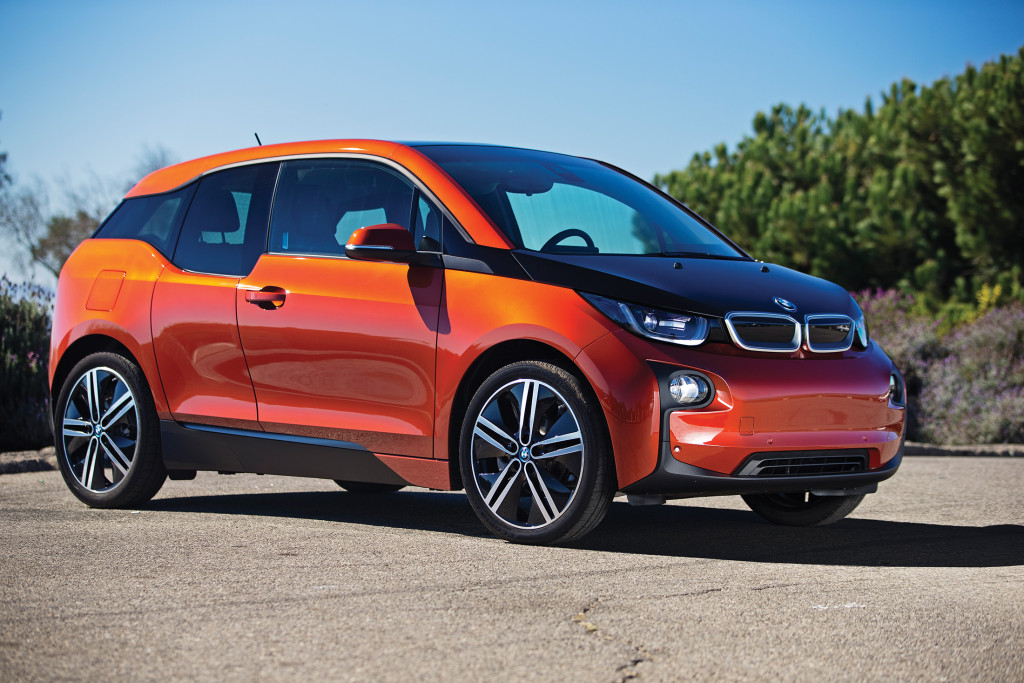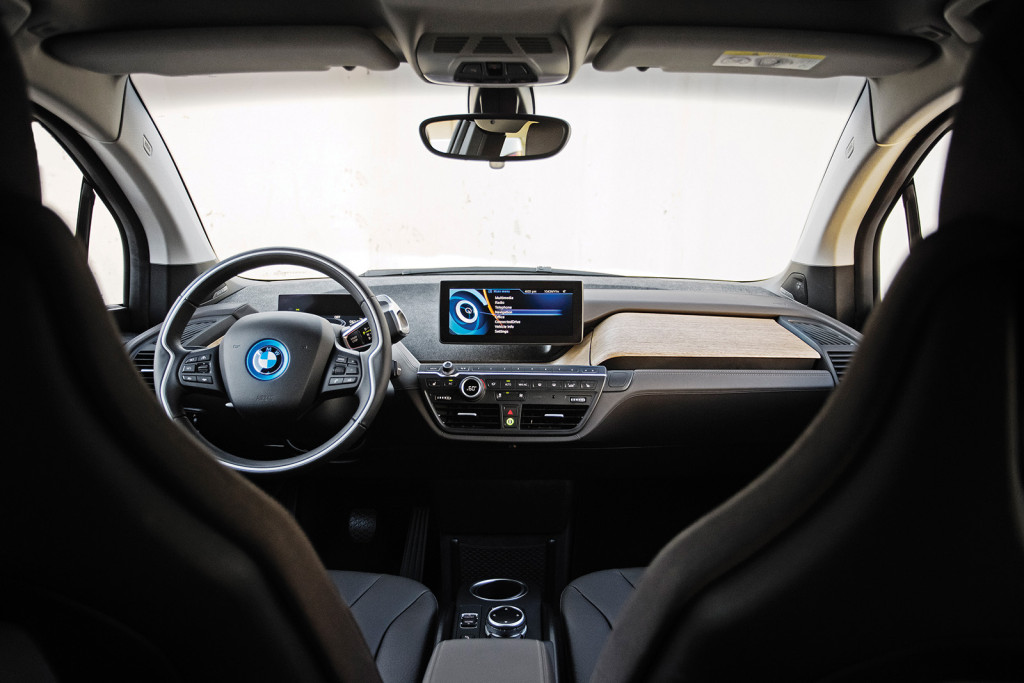Cargazing
By Derek Price
This car may have four wheels and some seats, but it doesn’t share much else with your run-of-the-mill vehicles.
It’s called the BMW i3, and it’s one of the strangest cars I’ve ever driven.

The BMW i3 is an electric car made from exotic materials such as aluminum, carbon fiber and magnesium. It has a range of 81 miles, or 150 miles with the optional “range extender” engine that runs a generator.
Even before you get to the way it looks — the backward-facing rear doors, the appliance-like body shape and the futuristic, space-age-style interior — you’ll see that the i3 is bizarre simply from the way it drives.
It’s an electric car, for starters, which isn’t too unusual these days. But it feels different from most electric cars, particularly when you take your foot off the accelerator and feel the car slow down so quickly that you’d swear the emergency brake is dragging.
It’s not a problem. It’s just the way this car always slows down thanks to a super-aggressive regenerative braking system. The very instant you take your foot off the “gas” pedal, the car uses a generator to turn your forward momentum into electricity to re-charge the batteries. That means the i3 doesn’t coast like a regular car and can quickly slow down, even from highway speeds, without the driver tapping the brakes.
The one time I had to use the i3’s brakes was when I came to a complete stop and didn’t want the car to roll back or forth. It’s the only car I’ve driven where using the brake pedal seems optional.
Now to the obvious question: How far can it go on a full charge?

The i3 has a dramatic, futuristic interior that looks like it came straight from a concept car at a major auto show.
BMW says it’s rated for 81 miles of electric range, but you can extend that by purchasing an optional “range extender” two-cylinder gasoline engine for around $4,000. When the battery runs low, the gas engine will run an electric generator to increase the total range to 150 miles.
Unfortunately, the “range extender” only holds 1.9 gallons of fuel — less than two milk jugs — so I spent a whopping $3.15 to fill up the tank. If BMW could have made room for just a couple more gallons, it would have gone a long way toward making this car more useful for road trips.
As it is, the i3 makes the most sense for urban drivers who want to drive economically around town in a vehicle that looks and feels like a car of the future.
And in many ways, the i3 does exactly that. It offers a prophetic peek at where cars might be headed when oil supplies dwindle.
The i3 is purpose-built as an electric car — not a regular car platform modified to hold batteries — and is made from all kinds of exotic materials such as aluminum, magnesium, carbon fiber and something called carbon fiber reinforced plastic (CFRP).
Extensive use of CFRP, along with carefully curved eucalyptus wood on the dash, makes for an interior unlike any other vehicle. The eucalyptus has a sculptural quality to it, and the whole cabin leaves such a futuristic, dramatic impression that it seems like something you would see on the concept stage of a major auto show, not on a production car.
Still, despite all the Earth-friendly strangeness, there are some nods to BMWs performance heritage. Its 170 horsepower electric motor delivers fast, silent acceleration nearly instantaneously to make it one of BMW’s quickest off-the-line cars at low speeds.
Its steering is insanely sensitive, too, helping to provide the kind of telepathic response that BMWs are known for.
Pricing starts at $42,400 for the i3 and $46,250 for the version with the range-extending engine.
At a Glance
What was tested?
2015 BMW i3 with Range Extender ($46,250). Options: Parking assist package ($1,000), Tech + Driving Assist Package ($2,500), Tera World ($2,500). Price as tested (including $995 destination charge): $54,545
Wheelbase: 101.2 in.
Length: 157.8 in.
Width: 69.9 in.
Height: 62.1 in.
Power: AC electric motor (170 hp, 184 lb.-ft.)
Charging time: 3 hours (220 volts)
Estimated Mileage: 137 mpge city, 111 mpge highway
RATINGS
Style: 10
Performance: 5
Price: 6
Handling: 8
Ride: 8
Comfort: 8
Quality: 9
Overall: 9
Video Review:
2015 BMW i3
http://bit.ly/2015i3
Why buy it?
It’s a purpose-engineered electric car with advanced technology, materials and styling. It looks and drives like nothing else on the road.
